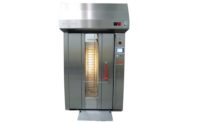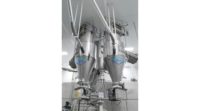Advances in fleet management are being driven by routing and scheduling software linked to in-cab vehicle tracking equipment that streamlines the delivery process. These advances can help cut costs and better monitor delivery of products in a market where on-time delivery is crucial.
Consumers today want fresh products, such as baked goods, at their convenience. These products need to be in store within a time frame that suits their lifestyles. If deliveries are late or inconsistent, retailers will go elsewhere to ensure they can meet consumer demand.
Software solutions
Most bakeries working with direct-store delivery (DSD) deliver on a daily schedule—sometimes to the same location more than once a day—and need to create daily route plans, so all, regardless of size, can benefit from automated planning. Using a routing optimization solution helps to streamline the planning process, produces realistic plans, and ensures that costly transportation resources (and fuel) are used as efficiently as possible.
One solution offered by Paragon Software Systems uses digital mapping to calculate the most-effective delivery and collection sequences with accurate journey times—allocating loads to appropriate vehicles and drivers. This ensures that schedules are geographically feasible to meet promised arrival time windows, while improving fleet utilization through efficient routing with minimal total mileage incurred and empty running reduced.
Raymond Zujus, director of business development, food and beverage, Telogis, Aliso Viejo, CA, sees three key developments as improving delivery operations:
- Predictive analytics is a big trend as more real-time point-of-sale (POS) information is made available and the data generated from the previously disjointed activities of transportation, merchandising and sales is integrated into one operational mode
- Improvements in productivity, labor and asset utilization are the result of more-efficient routing and scheduling activities using real-time plans vs. actual reporting, navigation with traffic and real-time ETA feeds
- The Internet of Things has become a reality now that “smart” vending machines and “connected” store shelves can alert everyone in the supply chain to low inventory, slow-moving products or demand spikes
Making sure that the right order gets unloaded at the right location is another key aspect of the delivery process. Distrib EQT, a software package available from pcdata USA, East Granby, CT, is designed to make that happen. Each stack or pallet that gets unloaded is scanned and matched against the orders and the load manifest. If the wrong stack is unloaded and scanned, the operator is warned of the error.
“Based on the truck load manifest, the operator is shown how many stacks or pallets/boxes remain until the complete order has been unloaded. This ensures that all product loaded is unloaded at the correct address,” says Marc Braun, president, pcdata USA. Also it allows for the number of empty baskets being picked up to be entered, thereby providing critical reconciliation of incoming and outbound baskets by destination.
Instant communications
GPS and instant communications have been a game-changer for DSD. “I’ve been in the industry since the late 1990s when we were still drawing hand-written maps for drivers to find new stops,” says Doug Deardorff, vice president of operations, Delco Foods, Indianapolis, IN. “Now you just pull up information on your phone or GPS and it gives you the quickest route; some even account for truck routes and low bridges. Also, back then we all carried pagers, and by the time you got the page and found a phone to call the office, you may have been talking for a couple hours. Now with onboard devices and cell phones, communication is instantaneous.”
The integration of in-cab vehicle tracking equipment with routing and scheduling software is another game-changer, according to Will Salter, CEO, Paragon Software Systems, Frisco, TX. It allows transport offices to track the progress of their drivers against the plan, providing full visibility of the process. Users can see when a vehicle arrives at a delivery, how long the call took and when the driver left. Should a delay arise, the provider can warn store managers in advance.
“Proof-of-delivery software, such as Paragon fleXipod, can be used to streamline the process at the point of delivery,” says Salter. “The store manager can quickly sign for the delivery via the driver’s handheld device, and receive the paperwork by email rather than be presented with multiple delivery notes.”
Equipping trucks with telematics, transmission of computerized information, is one of the best ways for fleet managers to monitor the use of their trucks and work with different traffic patterns. However, the term “telematics” represents only a small part of what today’s mobile fleets require, according to Zujus. “The new term is mobile enterprise management (MEM) software, which encompasses traditional telematics capabilities—connection to the truck to pull diagnostics, driver behavior, location—plus route visibility, safety, operating expense control, improved customer service and ETAs.”
Within Telogis’ MEM platform, its telematics solution provides customers with information on location, diagnostics and driver behavior. The broader platform encompasses truck-specific navigation, work order management, route optimization and mobile applications for ETA.
Managing driver behavior
Many tools are available to manage the behavior of drivers, which further improves the delivery process. For example, all Isuzu diesel trucks come standard with a Vehicle Health Report, which provides important information on how the vehicle is being driven. This provides the owner with details on acceleration, braking idle time and a number of other items that impact the cost of truck ownership.
Delco Foods recently completed an MPG (miles per gallon) study and improvement project that brought positive results. “The new trucks are so sophisticated that you can monitor every driver behavior and engine and transmission setting to get optimal fuel economy for a specific application. By reducing idle time, changing driver’s habits and adjusting some transmission settings, we were able to improve our MPG by almost one full mile per gallon. That equates to thousands in savings per year,” Deardorff says.
Isuzu Commercial Truck of America Inc., Anaheim, CA, has improved the maneuverability, safety and fuel economy of its trucks, says Brian Tabel, executive director of marketing. Isuzu also is seeing increased use of its Low Cab Forward (LCF) design, which facilitates delivery in tight, confined areas. “The driver’s ability to see eight feet in front of him (when delivering product) improves safety.”
Pending regulations
Recent initiatives on the regulatory front will impact fleet managers in the near future, says Scott Perry, vice president of supply management, Ryder System Inc., Miami. These initiatives involve the reduction of greenhouse gas (GHG) emissions and mandatory use of electronic logging devices (ELD). “The complexity of these technologies and the associated costs are top-of-mind for many fleet managers today,” he says.
Specifically, the U.S. Environmental Protection Agency and the National Highway Traffic Safety Administration have proposed a national program that would establish the next phase of GHG emissions and fuel efficiency standards for medium- and heavy-duty vehicles. This Phase 2 program would reduce carbon emissions and improve the fuel efficiency of heavy-duty vehicles.
Also, a new federal rule will require truck operators to use ELD to keep records of duty status. The rule will take effect Dec. 16, 2017. “Many of the light/medium duty vehicles that weren’t previously keeping a paper log will soon be required to operate with an ELD installed, which could affect the traditional route sales model utilized by the bakery/snack foods industry,” Perry says.
Alternative fuels
Because of the volatility of gas prices, many fleet managers are using alternative fuels. For example, Bimbo Bakeries USA, Horsham, PA, delivers its bread and baked goods in vehicles fueled by emissions-reducing, domestically produced propane autogas fuel. The company operates 84 Ford F-59 trucks, equipped with ROUSH CleanTech fuel technology.
For route delivery trucks, propane is the fuel Bimbo Bakeries has chosen based on availability and the ability to put fueling infrastructures on its property, says Gary Mareska, senior director of fleet services. “Bimbo Bakeries doesn’t have big depos—they’re in the 30–40 truck range—so propane makes the most sense right now. We’ve had zero issues with our propane trucks, and the drivers love them. We also are using a few compressed natural gas (CNG) fuel systems on our tractors,” he notes.
Delco Foods recently made the switch to CNG because of the cost fluctuations of diesel fuel. “CNG is a more market-stable product. This allows us to budget long-term more efficiently and more accurately forecast fuel costs. While diesel prices are low right now, we won’t be scrambling for alternatives when they start to rise,” Deardorff says.
“With lower diesel prices, new adoption of CNG has leveled off. We aren’t seeing companies buying CNG trucks for the first time like we did a couple years ago. However, those of us that have been in it from the beginning see the benefits. We also see station infrastructure grow because the bigger carriers are invested long-term in CNG.”
Perry sees natural gas being utilized in various segments of the commercial transportation industry, and increasing potential for electric vehicle platforms in light-duty markets. “The next five to 10 years should see a lot of development in this space based upon factors that are evolving around vehicle emissions, as well as advances in the passenger car space that should move up into the commercial vehicle ranks.”










